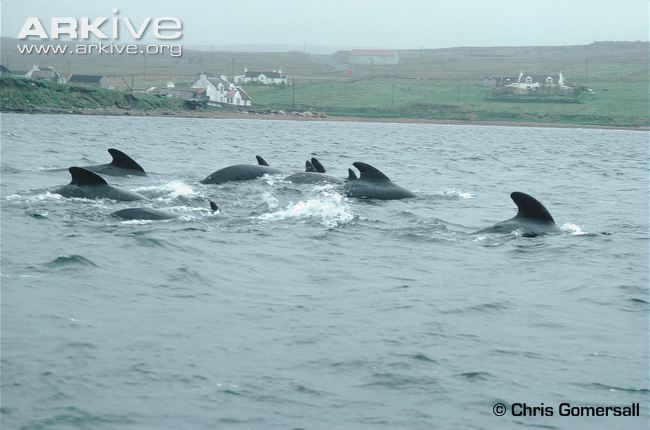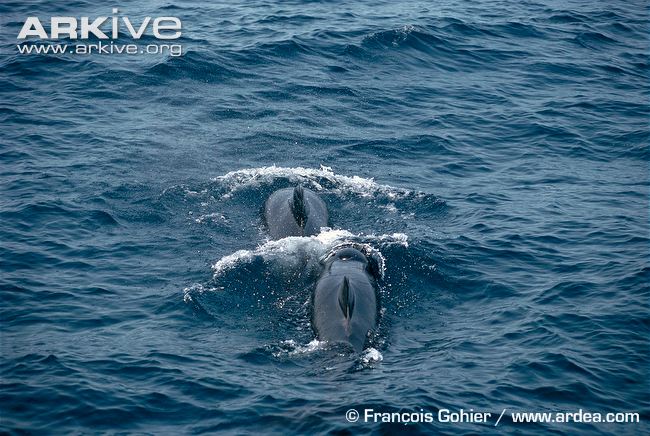Reproduction
For humans, life would be difficult if we never had our families to help us find our way in this big world. The same goes for the long-finned pilot (Globicephala melas) whale and its life in the vast ocean. The pilot whales (Globicephala) have a very cohesive bond within their family groups and a very rich life history (Bioexpedition 2013). The power of staying together through thick and thin and their reproductive cycle is something that gives pilot whales a very rich life history.
Life for the pilot whale is highly centered on close relationships with other pilot whales. Longed-finned pilot whales swim in large groups called pods. Pods usually contain about 50 to 200 whales (Amos et al. 1990). Pilot whales form a very strong bond within their social group and this is both and benefit and a devastating characteristic for these whales. Throughout the centuries, man has used this trait to herd pods of pilot whales into shallow water and kill them for food (Amos et al. 1990). However, these pods are the basis of pilot whales interactions within their species. Pods usually are made up of individuals of all ages and both sexes. However, based on molecular evidence, a majority of these pods are comprised of sexual mature females (Amos et al. 1990). This could be because, just like humans, female pilot whales tend to live longer, 60 years in the wild, compared to the average male pilot whale who can live up to 35 to 45 years (Amos et al. 1990).
On a reproductive timescale, females become sexually mature at around 8 years of age and males at around 12 to 13 years of age (NOAA 2012). Whales are mammals and, thus, have the same reproductive structures of sperm and egg that are used to create an offspring. They mate underwater and usually are belly to belly during this process (Whales: Giants of the Deep 2013). Offspring are very big at birth. They are usually between 5 and 6½ feet long and weigh up to 165 pounds. Pilot whale calves drink nutrient rich milk from their mother for 23 to 27 months (Preston 2011). Females have offspring about every 3 to 6 years and have a gestation period of 15 months (Whales: Giants of the Deep 2013). Females who are past their reproductive age become caregivers, whales that help raise new baby calves, within the pod. Pilot whales tend to mate during the early summer (Preston 2011). Once a female has a baby, called a calf, there is molecular data that suggest that related females tend to stay together. It is possible that males do stay with their maternal pod but it is more likely that the males migrate between pods and breed with different pods of long-finned pilot whales (Amos et al. 1990). And this begins the reproductive cycle all over again.
Not many animals stick together in maternally based pods the way that pilot whales do and the cohesion that they experience within their pods make for a very unique life history. Pods consist of grandmothers, mothers, and calves along with a couple males that may or may not be related to the core group. Within this core pod, pilot whales live out their reproductive life cycle and populate their pod. No matter if an organism lives in the ocean or on land having a family is very crucial to a species survival and a very special characteristic to the long-finned pilot whales.


